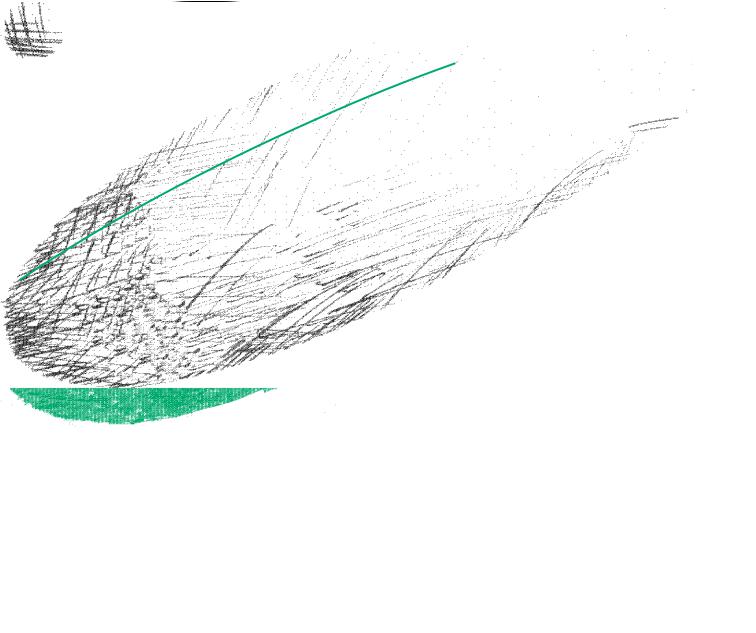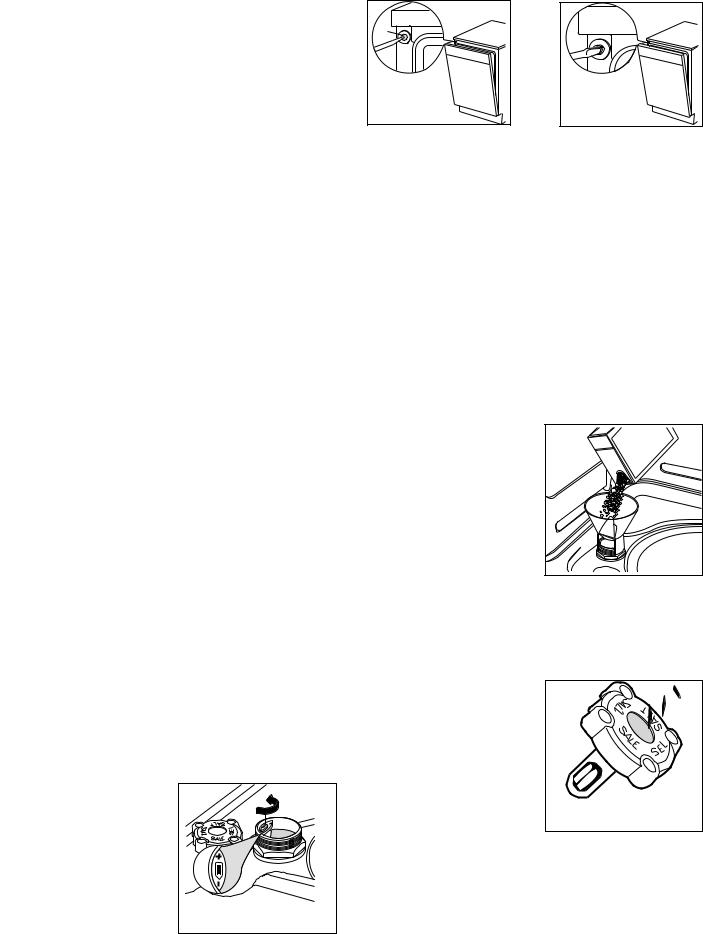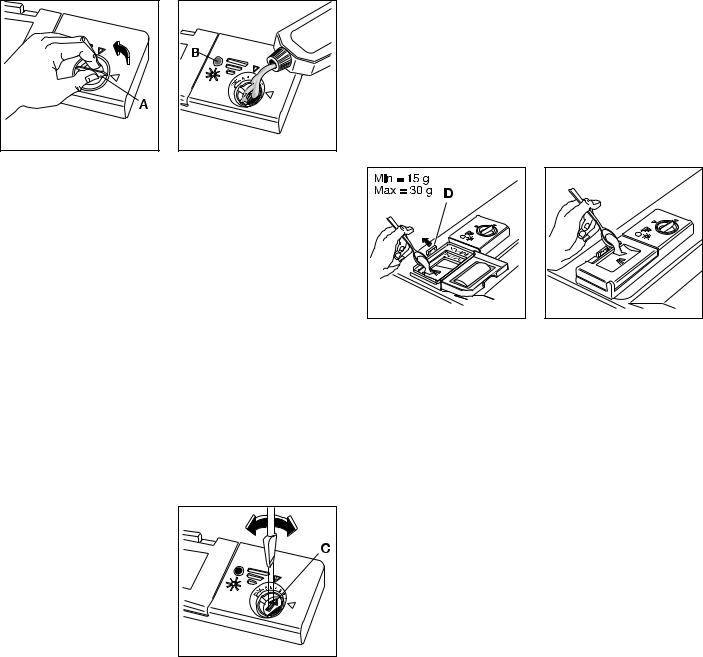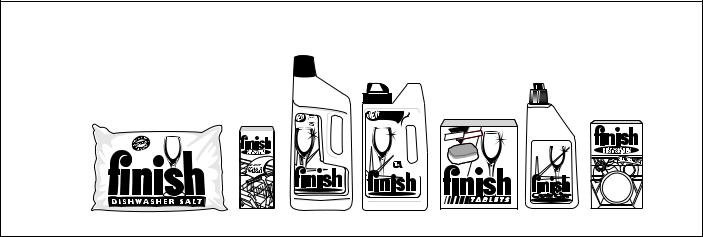Tricity Bendix BDW 45 User Manual

INSTRUCTION BOOK
Dishwasher
BDW 45

Instruction Book - Part 1
DISHWASHER
- Before use - Maintenance - Installation
Contents
Before use |
|
2 |
External cleaning |
5 |
Setting the water softener |
|
2 |
Prolonged periods of non-operation |
5 |
Filling with salt |
|
2 |
Frost precautions |
5 |
Filling with rinse aid and adjusting the dose |
3 |
|
Moving the machine |
5 |
Use of detergent |
|
3 |
Something not working |
6 |
|
|
|
||
Hints and tips |
|
4 |
Installation |
7 |
|
|
|
||
Maintenance and cleaning |
|
5 |
Water supply connections |
7 |
Internal cleaning |
|
5 |
Water outlet connection |
7 |
Cleaning the filters |
|
5 |
Electrical connection |
7 |
Important safety information
It is most important that this instruction book should be retained with the appliance for future reference. Should the applianc |
e |
be sold or transferred to another owner, or should you move house and leave the appliance, always ensure that the book is |
|
left with the appliance in order that the new owner can get to know the functioning of the appliance and the relevant safety |
|
information. |
|
This information has been provided in the interest of your safety. You MUST read it carefully before installing or using the |
|
appliance. |
|
Installation
●This appliance is heavy. Care should be taken when moving it.
●It is dangerous to alter the specifications or attempt to modify this product in any way.
●Care must be taken to ensure that the appliance does not stand on the electrical supply cable.
●Any electrical work required to install this appliance should be carried out by a qualified electrician or competent person.
●Any plumbing work required to install this appliance should be carried out by a qualified plumber or competent person.
Child Safety
●This appliance is designed to be operated by adults. Children should not be allowed to tamper with the controls or play with the product.
●Keep all packaging well away from children.
●Keep all detergents in a safe place out of children's reach.
During Use
●Items that are contaminated by petrol, paint, steel or iron debris, corrosive, acidic or alkaline chemicals must not be washed in this dishwasher.
●Under no circumstances should you open the door whilst
the appliance is in operation. Always turn off the appliance before opening the door.
●Only use detergent specifically designed for use in dishwashers.
●Long bladed knives stored in an upright position are a potential hazard.
●Long and/or sharp items of cutlery such as carving knives must be positioned horizontally in the upper basket.
●When finishing loading or unloading close the door, as an open door can be a hazard.
●Do not sit or stand on the open door.
●Isolate the appliance from the power supply and turn off the water supply after use.
●Care should be taken when cleaning the bottom door seal and hinge area as any exposed metal edges may cut if care is not taken.
●This product should be serviced by an authorised Service engineer, and only genuine spare parts should be used.
●Under no circumstances should you attempt to repair the machine yourself. Repairs carried out by inexperienced persons may cause injury or serious malfunctioning.
Contact your local Service Force Centre. Always insist on genuine spare parts.
Conservation
In the interest of the environment:
● Materials marked with the symbol |
are recyclable. |
●Check with your local Council or Environmental Health
Office to see if there are facilities in your area for re-cycling this appliance.
●When the appliance is to be scrapped, cut off the power supply cable and make the door closing device unusable to prevent young children from being trapped inside.
●Help to keep your country tidy - use authorised disposal sites for your old appliance.
1

Before use
Before using your dishwasher for the first time:
1.Ensure that the electrical and water connections comply with the installation instructions
2.Remove all packaging from inside the appliance
3.Set the water softener
4.Pour 1 litre of water inside the salt container and then fill with salt
5.Fill the rinse aid dispenser.
Setting the water softener
The dishwasher is equipped with a water softener designed to remove minerals and salts from the water supply, which would have a detrimental or adverse effect on the operation of the appliance.
The higher the content of these salts, the harder your water is. Water hardness is measured in equivalent scales, Clarke, French degrees and PPM (parts per Million).
The softener should be adjusted according to the hardness of the water in your area. Your local Water Authority can advise you on the hardness of the water in your area.
The dishwasher is factory set at level 2.
If this level is not suitable for your area the softener should be adjusted.
If your water is level 1 it is already soft and therefore there is no need to use salt.
In this case adjust the water softener on level 1 without using salt.
Only for dishwasher models with salt refill indicator light:
if the water softener has been adjusted on level 1 without use
of salt, the salt refill indicator light on the control panel will always remain illuminated when the machine is switched on.
To adjust the water softener, follow the instructions given in the chart
|
Water hardness |
|
|
|
|
|
|
|
|
|
|
Use |
Water |
Adjustment |
|
Level |
French |
Clarke |
PPM |
|
|||
of |
softener |
on the machine |
|
||||
degrees |
degrees |
(parts per |
|
||||
|
salt |
adjustment |
|
|
|||
|
(°TH) |
|
million) |
A |
B |
||
|
|
|
|
||||
|
|
|
|
|
|
|
|
1 |
0 - 14 |
0 - 10 |
0 - 140 |
NO |
- |
NO |
1 |
2 |
15 - 39 |
11 - 27 |
141 - 390 |
YES |
- |
NO |
1 |
3 |
40 - 50 |
28 - 35 |
391 - 500 |
YES |
+ |
NO |
1 |
4 |
51 - 70 |
36 - 49 |
501 - 700 |
YES |
- |
YES |
2 |
5 |
71 - 90 |
50 - 63 |
701 - 900 |
YES |
+ |
YES |
2 |
|
|
|
|
|
|
|
|
Water softener adjustment
AA01 |
Adjustment on the machine
A |
A |
AA04 |
|
B |
1 |
2 |
AA03 |
|
Filling with salt
Attention!
Only use salt specifically designed for use in dishwashers.
All other types of salt not specifically designed for use in dishwasher, especially table salt, will damage the water softener.
Only fill with salt just before starting a washing programme. This will prevent any grains of salt or salty water, which may have been spilled, remaining on the bottom of the machine, which may cause corrosion.
To fill:
1. |
To fill with salt, |
unscrew the cap of the salt container. |
|
2. |
Pour 1 litre of water inside the container |
(this is necessary |
|
|
only before filling with salt for the first time). |
|
|
3. |
Using the funnel (if |
|
|
provided), pour in the salt |
SALET |
|
until the container is full. |
|
|
SAL |
|
|
Do not worry if water over |
|
|
SALZ |
|
|
flows from the unit when |
SEL |
|
|
|
|
filling with salt, this is quite |
|
|
normal. |
|
4. |
Replace the cap making |
|
|
sure that there is no trace |
|
|
of salt on the screw thread |
SR06 |
|
or on the gasket. |
|
|
|
5. Screw on the cap tightly.
The salt container will require topping up periodically. According to the model, an indicator reminds you when filling with salt:
A)The salt cap has a refill indicator window in the centre.
A green float is clearly visible when there is salt inside the container, and
almost disappears when |
|
the salt has finished |
|
reminding you to add salt. |
SR11 |
B)A salt indicator light on the control panel will come on when the salt has finished.
The salt indicator light on the control panel can remain illuminated for 2-6 hours after the salt has been replenished, assuming the dishwasher remains switched
on. If you are using salts that take longer to dissolve then this can take longer.
The function of the machine is not affected.
2

Rinse aid
Rinse aid is automatically added during the last rinse, ensuring thorough rinsing, and spot and streak free drying. The dispenser, which is positioned inside the door, holds
about 110 ml of rinse aid, which is sufficient for 16 - 40 dishwashing programmes, depending upon the dosage
setting.
Filling with rinse aid
1.Open the container by turning the lid (A) anticlockwise.
2.Add the rinse aid until the container is completely full. The indicator (B) will be completely dark.
BR01 |
BR03 |
|
3.Top up the rinse aid when the indicator (B) becomes clear.
(Only for models with rinse aid indicator light)
Top up with rinse aid when the rinse aid indicator light on the control panel illuminates.
Ensure that the lid is closed after every refill.
Do not put liquid detergent in the rinse aid compartment. Clean up any rinse aid spilt during filling with an absorbent cloth to avoid excess foaming during the next wash.
Adjusting the dose
According to the finish and drying results obtained, adjust the dose of rinse aid by means of the 6 position selector (C) (position 1 minimum dosage, position 6 maximum dosage).
Increase the dose if there are drops of water or lime spots on the dishes after washing.
Reduce it if there are sticky whitish streaks on the dishes.
BR02 |
Use of detergent
Only use detergents specifically designed for use in dishwashers.
We recommend the use of |
Finish |
detergents which are |
available in the following options: |
|
|
Finish Double Action Tablets. |
|
Each tablet has the exact |
amount of detergent required, simply place in the dispenser. Finish Powder recommended for every day use.
Finish Liquid Gel ideal for every day use. As the gel is extra gentle is it recommended for fine bone china.
If using powder detergents proceed as follows:
1.Open the dispenser lid by pulling the catch (D).
2.Add the detergent according to the recommended quantity given in the "Washing programmes" chart (see "Instruction Book - Part 2").
As all detergents are not the same, you should also consult the instructions on the packet.
3.Always close the lid.
4.If the programme has a prewash add a little amount of detergent over the lid of the dispenser. Follow the recommended quantity given in the "Washing programmes" chart (see "Instruction Book - Part 2").
DE17 |
DE02 |
If using detergent in tablets proceed as follows:
1.For all programmes; place 1 tablet inside the detergent dispenser.
2.Always close the lid.
3.For all programmes with prewash; place a portion of a further tablet on the lid of the detergent dispenser.
If your dishwasher has a SID dispenser and you require a prewash, put the extra detergent into the SID dispenser and not on the lid of the detergent dispenser.
Insufficient quantities of detergent will produce poor washing results, whereas an excessive amount of detergent will not improve washing results and is also wasteful.
Using no more than the correct amount also contributes to reducing pollution.
Compact detergents with enzymes
In these compact powders the environmentally unfriendly components have been replaced by natural enzymes and other more biodegradable substances.
The enzymes deploy their full dirt dissolving power at a temperature as low as 50°C.
By choosing the 50°C programmes ( if available ) you can therefore achieve the same cleaning results that would
otherwise be achievable only with 65°C programmes and conventional detergents.These new compact powders are generally phosphate-free.
3

Hints and tips
To save energy
Place dishes in the machine immediately after every meal and wait until the dishwasher is full before washing.
If necessary run the Rinse and Hold programme (see "Washing Programmes" chart) so that any food scraps do not become caked on the dishes while you are waiting to run the complete wash programme.
Do not prewash dishes under running water.
For best washing and drying results
Before loading, remove all scraps of food and soak very heavily soiled pots and pans.
Arrange saucepans, cups and glasses etc. upside-down.
Tilt items with convex or concave surfaces so that the water drains off easily.
Avoid contact between the dishes as far as possible.
Items not suitable for dishwashers
The following items should not be washed in the dishwasher (unless they are sold as dishwasher proof):
-Cutlery with wooden or horn handles or glued parts
-bronze cutlery
-saucepans with wooden handles
-aluminium ware
-crystal ware
-leaded glass
-plastic items
-antique or fine decorated china
Certain types of decoration can discolour when washed in a dishwasher.
Crystal-ware and plastic objects, if not guaranteed dishwasher proof should be washed by hand.
Certain types of glass can also become opaque after being washed several times in a dishwasher.
A chemical reaction can occur between silver cutlery and stainless steel cutlery. As a precaution, do not wash together. Iron and cast iron objects can rust and stain other items. Aluminium tends to go black, copper, pewter and brass tend to stain.
If in doubt check with manufacturer of the item. When buying new dishes, ensure that they are dishwasher proof.
For best results we recommend the use of Finish detergents, rinse aid and salt.
EASY
POURING
PACK
L I Q U I D G E L
P O W D E R
NEW |
|
DOUB |
ACTION |
LE |
|
|
FOR A |
|
BRILLIANT |
|
SHINE |
|
R I N S E |
C O N C E N T R AT E D D I S H WA S H E R D E T E R G E N T |
|
DE15
4
